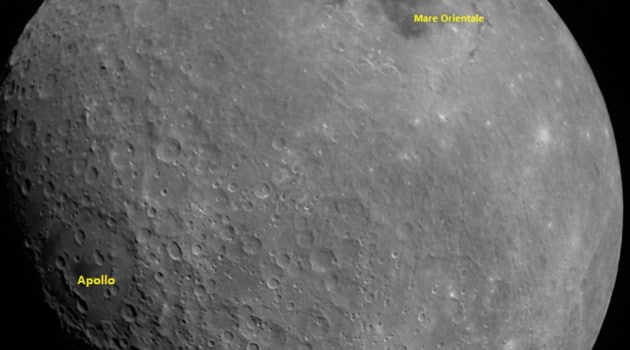Chandrayaan-2: All the images clicked by ISRO’s second lunar mission in its journey so far
Here are all pictures clicked by ISRO's Chandrayaan-2 mission in its journey so far.
 1 / 9
1 / 9Chandrayaan-2's first photograph of the Moon captured its LI4 camera on August 21 from a height of around 2,650 km. In this photo, it highlighted two key landmarks - the Apollo crater and the Mare Orientale basin. (Image source: ISRO)
You’ve Read Your Free Stories For NowSign up and keep reading more stories that matter to you.Already have an account? Sign InThis story requires a subscriptionSelect a plan and use IE10 code to get 10% extra offAlready a subscriber? Sign inThis story requires a subscriptionSelect a plan and use IE10 code to get 10% extra offThis content is exclusive for our subscribers.Subscribe now to get unlimited access to The Indian Express exclusive and premium stories.Already a subscriber? Sign In- 2 / 9
Photo showing the lunar surface was clicked by Chandrayaan-2's Terrain Mapping Camera-2 (TMC-2) on August 23. The image was clicked from a height of around 4,375 km. (Image source: ISRO)
- 3 / 9
Image showing the craters such as Jackson, Mach, Korolev and Mitra. The Mitra crater is named after Sisir Kumar Mitra, who was an Indian physicist and a Padma Bhushan recipient known for his pioneering work in the field of ionosphere and Radiophysics. (Image source: ISRO)
- 4 / 9
This photo shows Sommerfeld, which is a large impact crater measuring 169 km in diametre which is located in the farside northern latitudes of the Moon. It has relatively flat interior surrounded by a ring mountain and a number of smaller craters lie along the rim edge. (Image source: ISRO)
- 5 / 9
The Indian space agency last month had shared the first pictures of the Earth from Chandrayaan-2 as it was moving away from the planet. (Image source: ISRO)
- 6 / 9
ISRO shared the images of the Earth clicked by the LI4 camera of Chandrayaan-2's Vikram lander on August 3. (Image source: ISRO)
- 7 / 9
To recall, Chandrayaan-2 was launched on July 22. It went through as many as five orbit elevation near the Earth before leaving the blue planet's orbit on August 14. (Image source: ISRO)
- 8 / 9
On August 20, Chandrayaan-2 entered the orbit of the Moon after which it again went through a series of five lunar orbit manouevres. (Image source: ISRO)
- 9 / 9
After this, the Vikram lander separated from the Orbitor on Monday, September 2 and it performed a couple of de-orbit manoeuvres earlier this week. The lander is now set to make a soft landing on the Moon surface on Saturday, September 7 in between 1:30 am and 2:30 am. (Image source: ISRO)